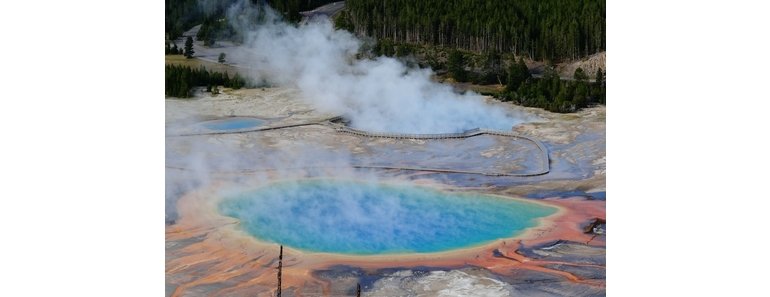Last updated on August 24th, 2016 at 07:15 pm
The most visited part of Hawaii – that’s Volcanoes National Park. It is home to Kilauea and Mauna Loa, recognized as two of the most active volcanoes worldwide. Around 3,000 people visit the park every day during its peak summer season. Truly, Hawaii Volcanoes National Park is the number one tourist destinations on the island.
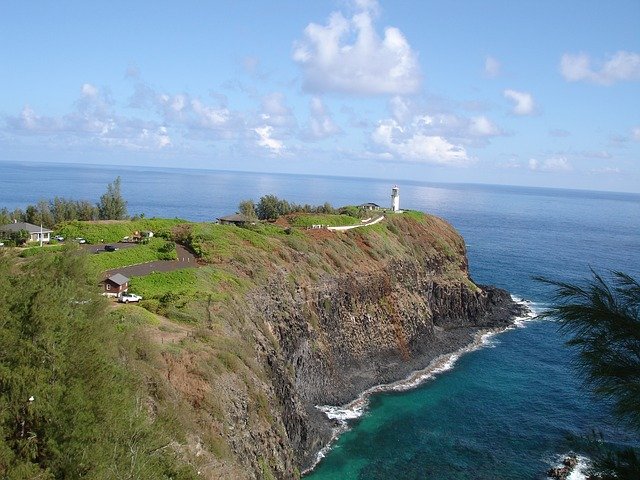
Interesting Facts
- Hawaii Volcanoes National Park contains two of the most active volcanoes in the world, Mauna Loa (4,170 m high) and Kilauea (1,250 m high).
- It is one of two national parks in America’s 50th state.
- The park contains 229,177 acres with volcanic craters and caldera, wildlife, rainforest and access to two active volcanoes.
- Kilauea is the star in Hawaii Volcanoes National Park because it’s among the most active of the world’s volcanoes and because its eruptions are not normally explosive or dangerous.
- Rare birds and endemic species can be found in the park, as well as forests of giant ferns.
History
The park was established in 1916 was created to preserve and protect the two powerful forces – Mauna Loa and Kilauea.
Must See Places in Volcanoes National Park
Jaggar Museum
As far as must‐see places are concerned, the first stop is the Thomas A. Jaggar Museum. Daytime viewing at the Jaggar Museum is a view to a lot of smoke and a view of the lakes. At night, the view changes to an illuminating light glow that is also reflected in the lakes.
Once inside the museum, visitors are treated to views of live seismic activity from digital monitors, the same views monitored by scientists. You can also see samples of actual lava from the volcanoes.
Lava Lake
The next stop is the jaw‐dropping Lava Lake – a place where you can see the amazing volcanic process in the volcanoes. A scene you don’t get to see every day!
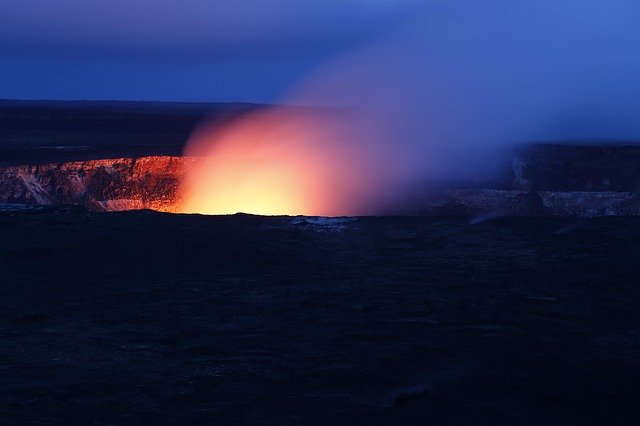
Kilauea Iki Crater
Hiking in the Kilauea Iki Crater is the coolest thing you can do in the park because you get to be in the crater itself. Back in 1959, a huge eruption took place in Kilauea Iki that lasted 36 days. Lava was spewed out in the air about 1,900 feet high. Records show that it took 36 years for the temperature to cool down and for the crater to solidify to the state it is in now.
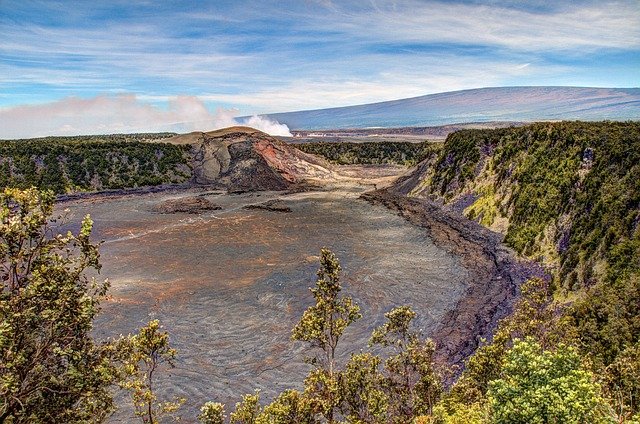
The crater is a four‐mile hike that will take about 3 to 4 hours because you will surely do a lot of stops to check the surroundings. Hikers can take their time in the crater but make sure you are geared up. Steam can also be seen coming up in the crater. Steam vents can also be found on roadsides.
Thurston Lava Tube
You should also not miss the Thurston Lava Tube which is a cave that you get to walk through. It was formed by lava about 500 years ago. It is 100 meters long and it takes about 20 minutes to walk through it. It’s lighted and has stairs for your safety.
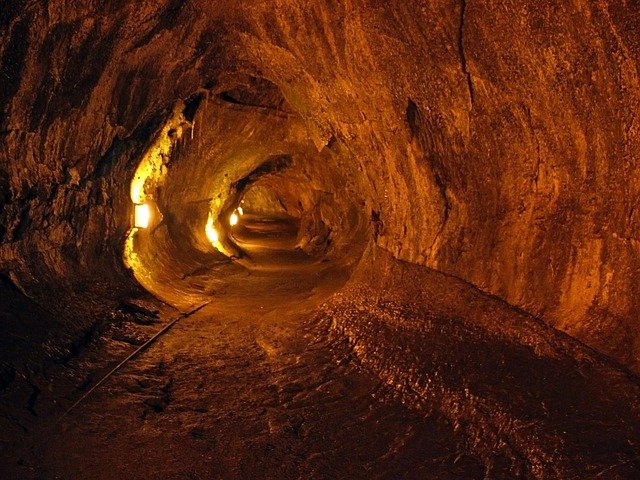
Craters Road
Going further, visitors can get to the rim of the crater at Craters Road, where lava meets the road. Deposited in the road is lava from the 1983 eruption. A rescue facility has been built near it, including some picnic tables where families can hang out and grab some snacks.
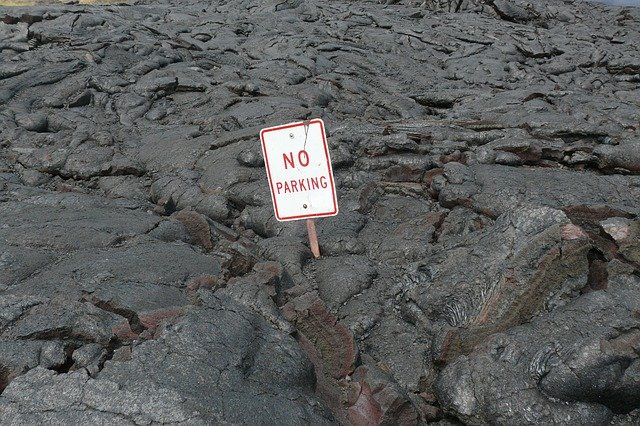
Hike Trail
Anyone wanting to get on an adventure is advised to take the 12‐hour hike back and forth in the 14‐mile hike trail. It’s a whole day hike that you have to be really prepared for. Hikers are also reminded to always heed the instructions of park rangers, obey signs on the roads and trails. and to never ever enter closed areas.
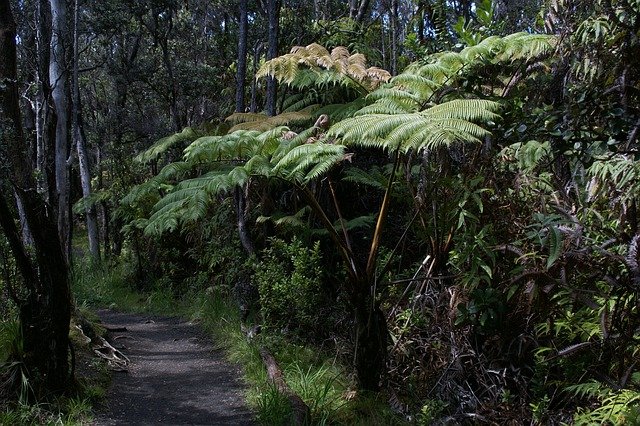
Things to be considered when preparing for a camping trip
Campgrounds
Camping in Hawaii Volcanoes National Park is an inexpensive way to see the sights.The park has two drive-in campgrounds the Nāmakanipaio and Kulanaokuaiki. Each campground differ from each other.
Nāmakanipaio Campground
Description: large, open grassy area with huge eucalyptus trees
Location: 31.5 miles south of Hilo on Highway-11
Amenities: Drive in/hike in sites, clean toilets, running water, picnic tables and barbecue pits
Advantages: Camping within walking distance of an active volcano, more amenities and sites
Disadvantages: More occupied, less privacy feeling
Camping Fee: $15 a night, first come first served
The Hawaii Volcanoes Lodge Company operates the Volcano House in Nāmakanipaio Campground which offers non-camping place to stay at in the park. The rooms in Volcano House are modern, well sized and offer beautiful views.
Nāmakanipaio Camping Equipment Rental and Set-up
If you haven’t brought your camping gear, the Volcano House provide camping gear and supplies such as tents, bedding and other needed camping equipment with a rental fee of $40. The best thing is they will set it up for you. Very convenient! The campsite have bathrooms and parking area. For reservations, call Volcano House : (808) 756-9625.
Kulanaokuaiki Campground
Description: 8 campsites, 2 of the sites are wheelchair accessible
Location: 5 miles down the Hilina Pali Road
Amenities: Vault-type toilet, picnic tables
Advantage: Camping experience in a peaceful and private setting
Disadvantages : No running water or electricity
Restrictions: Fires are not allowed.
Camping Fee: FREE (no permits necessary) on a first come first served basis.
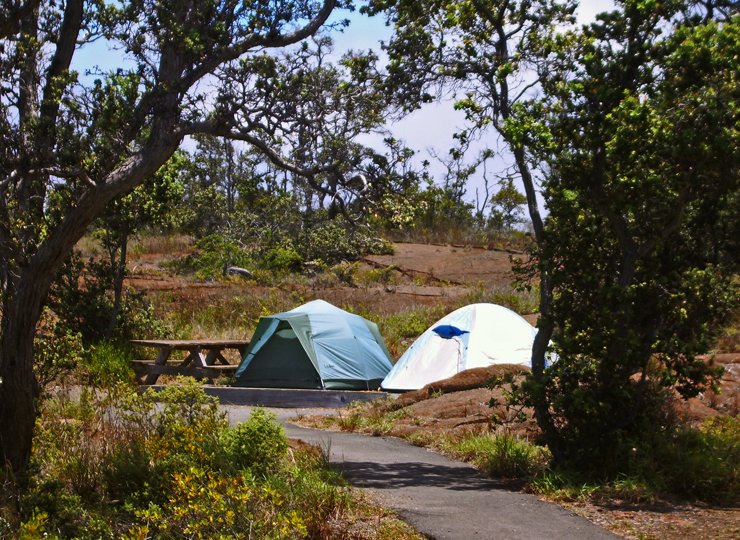
Safety
Since the park has two of the world’s most active volcanoes, it is advisable to be aware of the many possible dangers and hazards when visiting this place. Young children, infants, pregnant women and visitors with heart ailments and breathing problems are advised to avoid areas where volcanic fumes exist. Volcanic gases (fumes) are hazardous to everyone and may pose health risks. Gases and fallout (cinder, pumice, Pele’s hair) from volcanic eruptions which can occur at any time are extremely hazardous and can cause lung and eye irritation. The environment in Hawaii Volcanoes National Park is a very dynamic natural area with many dangers. Visitors should educate themselves to the hazards, and stay alert at all times!
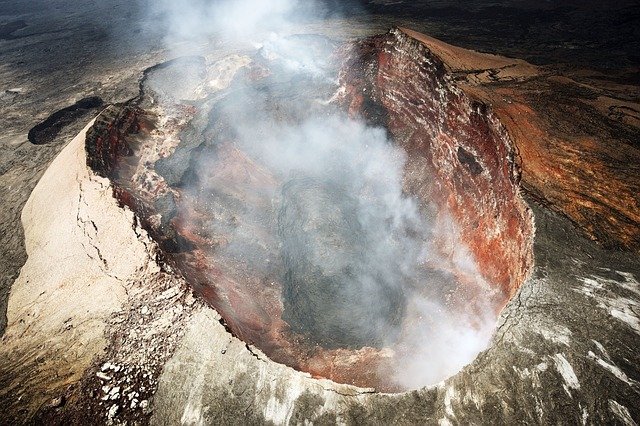
Weather
Weather in Hawaii Volcanoes National Park vary according to elevation. Park visitors should bring warm clothing for cool days and evenings. Wear layers of clothing to feel comfortable while exploring the park. Prepare for rain and bring a tent with a good rain fly. Weather can be unpredictable. Park visitors should be prepared for a wide range of weather conditions. Check local weather forecast and information prior to your trip.

Cell phone coverage
Cell service in Hawaii Volcanoes National Park is limited. Consider joining a group or booking a guided tour to ensure your safety especially when you plan to hike in the lava fields.
Pets
Pets (leashed) are allowed in developed areas (paved roadways, parking areas) and in Namakanipaio Campground. Pets are prohibited in all of the trails, undeveloped areas, and designated wilderness in the park. Pets are also not allowed on Hilina Pali Road and Kulanaokuaiki Campground. Pets must be closely monitored at all times and may not be left unattended in a vehicle.
Tips for Planning a camping trip
- When visiting the park, tourists should make it a point to check in at the Visitors’ Center.
- Entrance fees to Hawaii Volcanoes National Park apply and may be paid at the entrance station.
- Camping at Nāmakanipaio requires reservation. For more information about reservation and fees, visit this site or call at 808-756-9625
- Stays are limited to 7 days in a month and cannot exceed 30 days per year.
- Permits are required for overnight backcountry camping.
- The park constantly has areas that are closed off due to weather conditions and the unpredictability of the active volcanoes and craters.
Resources:
https://www.nps.gov
http://www.hawaiivolcanohouse.com
http://nobackhome.com
http://thebesttravelplaces.com
https://marcoinkona.com/
http://www.anxiousadventurers.com
http://www.shannontech.com


